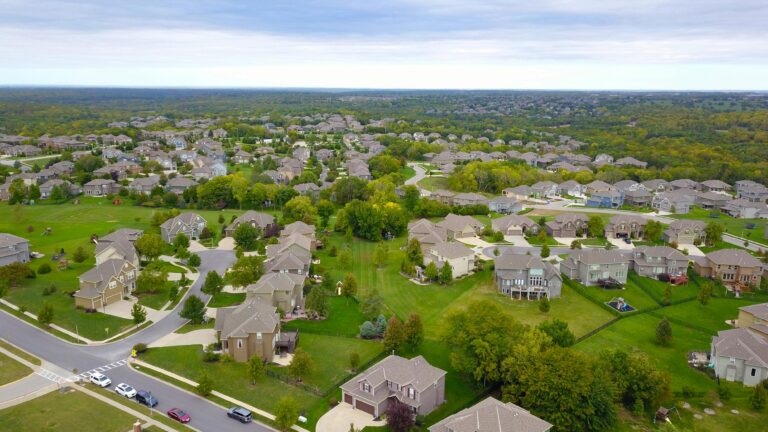
In recent years, walkability has become an increasingly important factor in determining property values across the United States. Whether you’re a first-time homebuyer or a long-time real estate investor, understanding how walkability impacts the market can provide valuable insights into the future potential of your property investments. Walkability refers to how easy and convenient it is to walk to essential services, amenities, and transportation options from a given location. As more people prioritize convenience, sustainability, and a quality lifestyle, the demand for walkable neighborhoods has risen, influencing property values in both subtle and significant ways.
What Does Walkability Mean?
At its core, walkability is about accessibility. It describes the ease with which a person can walk to various destinations like grocery stores, schools, parks, public transport, restaurants, and even workplaces. A walkable neighborhood promotes a lifestyle that minimizes dependence on cars, encouraging residents to walk, bike, or use public transit. As such, urban planners and real estate professionals have started emphasizing the “walk score” of neighborhoods, with a higher score typically indicating a more walkable environment.
The walkability of an area is often measured on a scale of 0 to 100, with areas scoring 70 and above being considered walkable. Areas with walk scores in the 90s are highly sought after for their proximity to amenities, vibrant communities, and less reliance on cars. This growing interest in walkability has profound implications for the real estate market.
The Impact of Walkability on Property Values
There’s a strong link between walkability and property values. Properties located in highly walkable neighborhoods tend to have higher values compared to those in less walkable areas. In fact, studies have shown that a higher walk score can increase property values by as much as 30% in some cases. This effect is particularly noticeable in urban areas, where transportation options are abundant, and daily amenities are within walking distance.
For both first-time homebuyers and seasoned investors, understanding how walkability influences property values is key. Buyers looking for homes in walkable neighborhoods are often willing to pay a premium for the convenience that these areas provide. For investors, properties in walkable neighborhoods tend to have lower vacancy rates and more consistent rental income, making them attractive long-term investments.
Walkability and Its Appeal to First-Time Homebuyers
First-time homebuyers are increasingly prioritizing convenience and lifestyle when choosing where to live. Walkable neighborhoods offer a lifestyle that appeals to younger buyers, especially those in their 20s and 30s. These buyers are often more focused on finding homes near work, dining, shopping, and entertainment rather than a large home in a more suburban or car-dependent area.
The appeal of walkable neighborhoods extends beyond convenience. Many first-time homebuyers are also attracted to the environmental benefits of living in areas with strong walkability. Reducing the need for car ownership helps lower carbon footprints, which is a priority for many environmentally conscious individuals. Furthermore, the walkable lifestyle can improve overall health, as walking encourages physical activity and reduces stress associated with long commutes.
Walkability also offers a sense of community. Neighborhoods with high walk scores tend to be more vibrant, with cafes, parks, and local businesses contributing to a sense of connectedness. Many first-time buyers are drawn to these areas because they want to be part of an active, socially engaged neighborhood.
Walkability and Long-Term Investors
For long-term investors, walkability represents a strategic consideration when evaluating properties. Neighborhoods that score high on walkability tend to be more resilient to market fluctuations and economic downturns. The demand for walkable areas has remained strong even in challenging real estate markets, making them safer investment options for those looking to build a reliable portfolio.
One key advantage of investing in walkable areas is the ability to attract high-quality tenants. Renters are willing to pay more for the convenience of being close to essential services, entertainment options, and public transport. This can translate into higher rental rates and increased tenant retention rates. In fact, rental properties in walkable neighborhoods often experience lower vacancy rates compared to those in more suburban or car-dependent areas.
Additionally, properties in walkable neighborhoods are generally more likely to experience steady long-term appreciation. This is because demand for walkable properties tends to increase over time, driven by shifting preferences for convenience and sustainability. Investors who purchase properties in walkable areas early on can capitalize on these trends, seeing their investments appreciate at a faster rate than those in less walkable neighborhoods.
The Role of Public Transit in Walkability
Public transit is a key component of walkability. For many homebuyers and renters, easy access to public transportation is just as important as proximity to shops and parks. In cities like New York, San Francisco, and Chicago, neighborhoods with excellent access to subway stations or bus lines tend to be more desirable, and therefore, more expensive.
For investors, public transit access is a significant factor to consider when assessing the walkability of a neighborhood. Properties near major transit hubs are likely to see consistent demand from tenants who prioritize convenient commuting options. For first-time homebuyers, proximity to public transit may reduce the need for a car, making it a more cost-effective choice for those just starting out.
How Walkability Affects the Broader Economy
Walkable communities not only benefit homeowners and investors but also contribute positively to the broader economy. Walkable neighborhoods tend to have thriving local businesses, as the foot traffic generated by residents and visitors supports retail shops, restaurants, and other service providers. This can create a cycle of economic growth, where businesses thrive, creating more jobs, which in turn attracts more residents.
In turn, this economic vibrancy translates to increased demand for real estate in walkable areas. As businesses prosper, property values rise, attracting both homeowners and investors looking for a stake in growing neighborhoods.
Walkability is also linked to increased tourism. Cities with pedestrian-friendly areas often see more visitors, further boosting local economies. This can be particularly beneficial for investors with properties in or near these areas, as they may be able to capitalize on short-term rental opportunities.
The Future of Walkability in Real Estate
As the demand for walkable living continues to rise, it’s clear that walkability will remain a crucial factor in determining property values in the years to come. The younger generation of homebuyers, many of whom prioritize convenience and sustainability, will continue to seek out neighborhoods that allow them to reduce their dependence on cars. As more cities invest in pedestrian infrastructure, creating walkable communities will become an even higher priority.
For long-time investors, this means a growing opportunity to invest in walkable neighborhoods, knowing that their properties are likely to see long-term appreciation and stable demand. Real estate markets in cities across the U.S. are shifting, and investors who keep a close eye on walkability trends will be well-positioned to capitalize on the changing landscape.

Whether you’re a first-time homebuyer or a seasoned investor, understanding the growing importance of walkability is essential when navigating today’s real estate market. Walkable neighborhoods offer convenience, sustainability, and an improved quality of life, which increasingly appeals to homebuyers and renters alike. For investors, properties in walkable areas offer higher rental income potential, lower vacancy rates, and strong long-term appreciation.
As demand for walkable living continues to increase, both homebuyers and investors must factor walkability into their decision-making processes. Whether you’re purchasing your first home or expanding your investment portfolio, considering walkability will help you make smarter, more informed real estate choices that align with shifting market trends.





